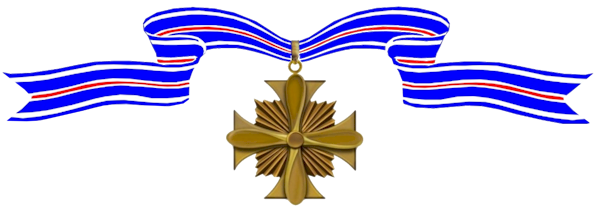Harold Fischer joined the Navy shortly before WWII ended, did a brief stint and then attended college at Iowa State University. He returned to service in 1949, this time in the Army, and was subsequently transferred to the Air Force. He scored 10 victories to become a Double-Ace, before being shot down himself on April 7, 1953. He was held as a POW until 1955 when he returned home to resume his Air Force career, serving as an advisor to the South Vietnamese Air Force before retiring in 1978 as a U.S. Air Force Colonel.
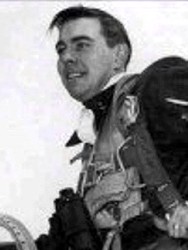
–
Cemetery:
Awards Received
-

Prisoner of War Medal
-
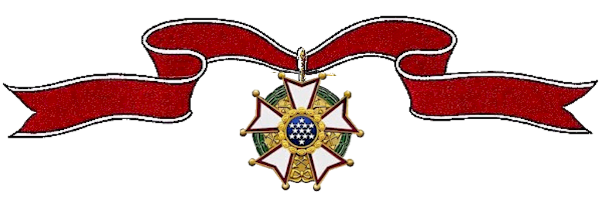
Legion of Merit
-
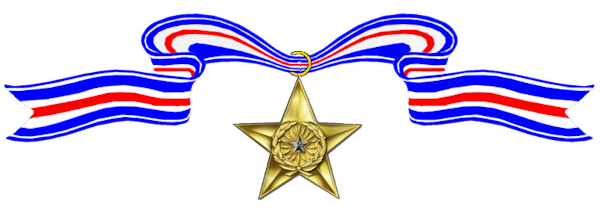
Silver Star
-
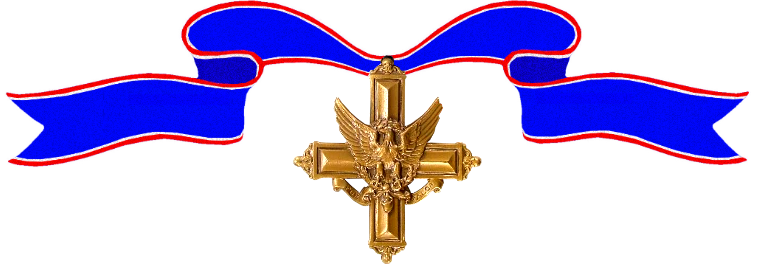
Distinguished Service Cross
-
Prisoner of War Medal
Service:
United States Air ForceRank:
CaptainBatallion:
39th Fighter-Interceptor SquadronRegiment:
51st Fighter-Interceptor GroupDivision:
Prisoner of War (China)Action Date:
April 7, 1953 – May 30, 1955
Captain Harold E. Fischer (AFSN: AO-2204126), United States Air Force, was captured by communist forces after he was shot down over North Korea on 7 April 1953, and was held as a Prisoner of War until his release by the Chinese on 30 May 1955.
-
Legion of Merit
Service:
United States Air ForceRank:
ColonelAction Date:
September 6, 1971 – September 6, 1972
The President of the United States of America, authorized by Act of Congress, 20 July 1942, takes pleasure in presenting the Legion of Merit to Colonel Harold Edward Fischer (AFSN: AO-2204126), United States Air Force, for exceptionally meritorious conduct in the performance of outstanding services to the Government of the United States as Chief, Air Force Advisory Team THREE, and Advisor to the Commander, 3d Air Division, Vietnamese Air Force, Republic of Vietnam from 6 September 1971 to 6 September 1972. In these important assignments, the leadership, exemplary foresight and ceaseless efforts consistently demonstrated by Colonel Fischer resulted in significant contributions to the progress and effectiveness of the Vietnamese Air Force Improvement and Modernization Program. By his superior management of the Advisory Team and his skillful advice and assistance, the 3d Air Division assumed a major portion of the air support missions for all of Military Region III. Three major military operations were conducted in this region and Cambodia with Vietnamese air power being a critical factor in their success. The superior initiative, outstanding leadership, and personal endeavor displayed by Colonel Fischer reflect great credit upon himself and the United States Air Force.
-
Silver Star
Service:
United States Air ForceRank:
CaptainBatallion:
39th Fighter-Interceptor SquadronRegiment:
51st Fighter-Interceptor GroupDivision:
5th Air ForceAction Date:
January 24, 1953
Headquarters, Far East Air Force: General Orders No. 223 (May 7, 1953)The President of the United States of America, authorized by Act of Congress July 9, 1918, takes pleasure in presenting the Silver Star to Captain Harold Edward Fischer (AFSN: AO-2204126), United States Air Force, for gallantry in action as Pilot of an F-86 Sabrejet Fighter Bomber of the 39th Fighter-Interceptor Squadron, 51st Fighter-Interceptor Group, FIFTH Air Force, on 24 January 1953. On that date, Captain Fischer was flying number three position in a flight of four F-86 aircraft acting as escort for fighter-bombers on an attack against the Sinanju bridge complex. When enemy MiGs were encountered the flight attacked, during which Captain Fischer’s aircraft was damaged by the misfire of one of his fifty caliber guns. Although the rudder cable was completely severed, the cabin pressurization lost, and the flaps unevenly extended, Captain Fischer aggressively pressed his attack on a MiG, flying through molten metal streaming from the burning MiG. Captain Fischer broke off his attack only after successfully destroying the enemy aircraft and disrupting a possible attack on the friendly Fighter-Bombers. Through his high personal courage in attacking, despite the heavy damage to his aircraft, Captain Fischer demonstrated devotion to duty beyond the normal call, and reflected great credit upon himself, the FAR EAST Air Forces, and the United States Air Force.
-
Distinguished Service Cross
Service:
United States Air ForceRank:
CaptainBatallion:
39th Fighter-Interceptor SquadronRegiment:
51st Fighter-Interceptor GroupDivision:
5th Air ForceAction Date:
February 16, 1953
Headquarters, Far East Air Forces: General Orders No. 9 (January 19, 1954)The President of the United States of America, authorized by Act of Congress July 9, 1918, takes pleasure in presenting the Distinguished Service Cross (Air Force) to Captain Harold Edward Fischer (AFSN: AO-2204126), United States Air Force, for extraordinary heroism in connection with military operations against an armed enemy of the United Nations while serving as Pilot of an F-86 aircraft Sabrejet Fighter aircraft of the 39th Fighter-Interceptor Squadron, 51st Fighter-Interceptor Group, FIFTH Air Force, in action against enemy forces in the Republic of Korea on 16 February 1953. On that date, while leading a flight of two F-86 Sabre Jets on an air superiority mission over North Korea, Captain Fischer sighted a formation of sixteen enemy MiG-15s heading south across the Yalu River. Disregarding the odds against him, he immediately initiated an attack. Although under intense enemy fire, Captain Fischer tenaciously pursued the leading MiG-15 through violent evasive maneuvers until he had destroyed it. Completely disregarding the fact that several enemy aircraft were still firing at him, Captain Fischer skillfully maneuvered his Sabre into firing position on another MiG-15 that was attacking his wingman. Again demonstrating extreme courage and outstanding flying skill, Captain Fischer pressed his attack until the MiG-15 was destroyed. These two victories in the face of counter attacks by such superior numbers unnerved the enemy to the extent that they withdrew into Manchuria before further attacks could be made. By his outstanding heroism, his complete disregard for personal safety and high sense of duty, Captain Fischer reflected great credit upon himself, the FAR EAST Air Forces, and the United States Air Force.


